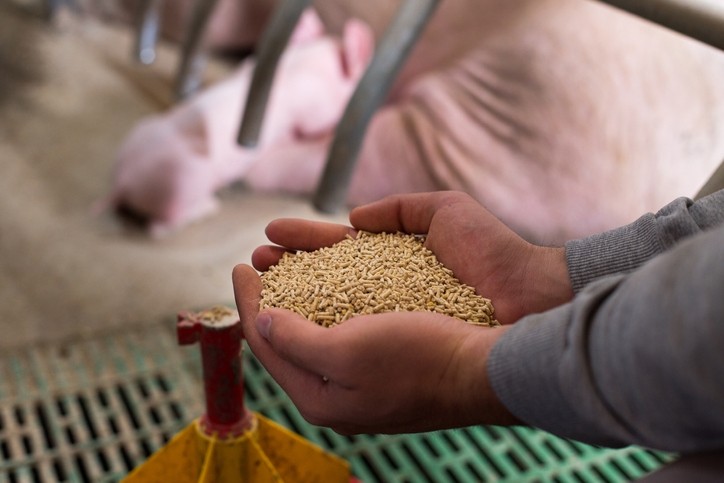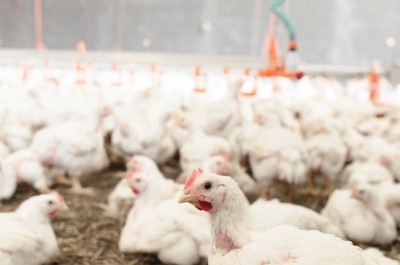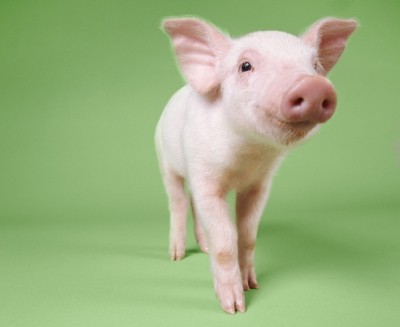Physical feed characteristics key for nutrient digestibility

The authors, including renowned experts in the field like Menno Thomas, founder of Zetadec, and Dr Wouter Hendriks, chair of animal nutrition at the Department of Animal Sciences at Wageningen University, saw that particle size fractions that result from the milling of maize and soybean meal (SBM) differ in nutritional composition.
The researchers also observed that ingredient fraction in vitro digestibility is linked to particle size and shape and particle chemical composition.
Moreover, they said that grinding samples under 1-mm affected the in vitro digestibility of maize and SBM.
"This study aimed to gain a better understanding of the relationship between particle size and pig performance. After grinding, we saw that not only the particle size of ingredients is reduced, the physical characteristics of particles and nutrient distribution are also changed, and that can affect the digestibility and kinetics of nutrient digestion,” Fang Lyu, one of the researchers, told us.
The results, she continued, showed that the nutrient content of ingredients varied after grinding.
Also weighing in on the findings was Zetadec's Menno Thomas. "If, in the future, industry is able to factor in the nutrient composition of the various particle size classes after grinding, we might be able to further match size and composition of certain particles to the digestive requirements of the animal."
Rationale for study
The authors outlined how feed and feed ingredient particle size are important in both feed manufacturing and the nutrition of pigs and poultry. Grinding, as a standard procedure in feed manufacturing, benefits mixing, conditioning and pelleting. By reducing the mean particle size of feed ingredients/diets, the digestibility of nutrients and growth performance in pigs can be increased due to an increased surface area to volume ratio exposing more nutrients to digestive enzymes, they said.
But this influence of particle size on pig growth performance is not consistent and the reasons are not fully understood, noted the authors.
Research on the relationship between particle shape characteristics such as circularity, projected area and aspect ratio on nutrient digestion in animals is limited and may be important to explain the influence of feed particles on animal performance, they added.
So, with this study, they wanted to figure out the nutrient content and physical characteristics of individual size fractions of hammer-milled maize and SBM and link that to in vitro digestibility.
Methodology
Maize and SBM were hammer-milled over a 6- and 2-mm size screen, respectively, and were sieved into seven fractions.
Particle characteristics of the hammer-milled material were determined by dry sieving, wet sieving and image analysis methods.
The nutrient composition including dry matter, ash, crude fiber (CF), crude fat (CFat), crude protein (CP), starch and in vitro digestibility of organic matter (OM), CP (SBM) and starch (maize) were also measured and nitrogen-free-extract was calculated.
The findings
The results show that the nutrient composition differed among fractions of ground maize and SBM, said the team.
A large difference in starch levels of maize was observed between the various sieve size fractions and the CP content of SBM increased with larger sieve sizes, noted the authors.
The in vitro digestibility of OM and CP was different among the various particle size fractions for both ingredients. However, the in vitro digestibility of starch did not differ between each size fraction in maize.
The digestibility of OM was positively related to the starch level.
“The presented data show that the nutrient composition and physical characteristics of materials among various size fractions of hammer-milled maize and SBM differ and may explain pig growth performance differences observed in commercial production.”
Commenting further on the results of the study, Thomas also noted: "A modification was run on the in-vitro digestibility method as described by Boisen and Fernandez. It was shown that additional grinding of particles > 1 mm has an impact on the digestibility. This would mean that, perhaps, after discussion, a modification of the in-vitro digestibility method would improve our understanding of digestion as related to particle size.
"Novelties introduced here are a check on morphological characteristics (circularity, roundness, solidity, projected area) and correlated to in vitro digestibility. Further research needs to be done to assess the relevance of such an approach to look at physical particle traits, but first results seem promising."
Source: Animal Feed Science and Technology
DOI: https://doi.org/10.1016/j.anifeedsci.2021.115095
Title: Particle size distribution of hammer-milled maize and soybean meal, its nutrient composition and in vitro digestion characteristics
Authors: F Lyu, AFB van der Poel, WH Hendriks, M Thomas













